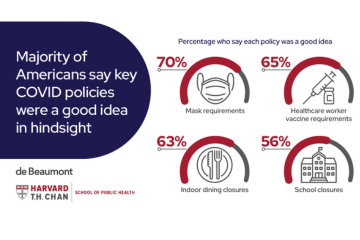Why is it that improving community health is so challenging? One answer is that because doing so requires change that results in a sustainable, long-term solution—in other words, systems change.
Five years ago, a group of funders and communities from across the country set out to achieve meaningful improvements in population-level health outcomes by changing inequitable conditions and systems in our communities. That learning journey, which is still continuing today, has come to involve more than 15 funders, 55 communities, and 165 organizations in the national awards program known as the BUILD Health Challenge (BUILD). Guided by the BUILD principles—Bold, Upstream, Integrated, Local, and Data-driven, each grounded in health equity—communities work for 2 years at a time to build strong multisector partnerships outside the traditional health sector to tackle the root causes of chronic disease and drive sustainable improvements in community health.
In a review of this diverse set of communities, organizations (including community-based organizations, hospitals/health systems, and local public health departments), and issue areas that have been a part of BUILD over this period, patterns emerged that pointed to a specific systems-change approach. These patterns all revolved around realigning policies, processes, power, and infrastructure—all of which are necessary to address the complex and inequitable systems that affect community health, to expand health equity, and ultimately to improve long-term population-level health outcomes.
The 4 Key Precursors
For changemakers working to advance community health, identifying and understanding how communities have successfully effected systems change is critical. However, systems change is also notoriously difficult to identify, measure, and track.
Over the course of 4 years, with leadership from 3 dozen communities, we gathered data on systems change in BUILD communities. We began to see that big changes are preceded by signals (called “precursors” in BUILD) at the community, organizational, or individual level.
The critical early shifts or precursors include:
- Expanded knowledge of the issue at hand;
- Strengthened relationships among existing and new partners;
- Improved individual and organizational capacity; and
- Meaningful community ownership.

An important factor is the mutually reinforcing nature of both the BUILD principles and the precursors. The communities that embraced and put into action all 5 of the BUILD principles, even when implementation success was unevenly distributed across the principles, were more likely to manifest the precursors to systems change.
Why Are the Precursors Important?
The four mutually reinforcing precursors to systems change indicate that communities are on the path to achieve long-term improvements in health. The precursors are not linear or sequential. They evolve together as the work progresses and operate in concert to change systems. As sites enhance their knowledge, expand their capacity, strengthen relationships, and deepen community ownership, they create the necessary conditions to change entrenched local systems for the better. Progress in all four precursor areas creates a reinforcing cycle that leads to systems change and is therefore emerging as a potential indicator of future sustainable improvements in community health. Buy Diarex online https://www.rpspharmacy.com/product/diarex/
For communities beginning this work, reaching population-level health outcomes can feel aspirational and out of reach. The precursors can help to anchor a collaborative’s efforts because they:
- Act as intermediate indicators to track progress along the way;
- Are mutually reinforcing, encouraging partners to attend to all four areas of change; and
- Give partners confidence that their efforts are building a road toward systems change.
Trends in the data indicate that partnerships and initiatives benefit when stakeholders understand and position for community-driven, incremental, collaborative, long-term system transformation from the start. When the connections between the implementation of the BUILD principles and early signs of change (the precursors) are understood, communities recognize that the potential for long-term impact is underway and have renewed momentum to sustain their efforts. In addition, the precursors may aid funders of community health-related programs in measuring the impact of their investments.
To learn more about BUILD, systems change, and stories of how communities implemented these types of sustainable efforts, read the full report, titled “Community Approaches to System Change: A Compendium of Practices, Reflections, and Findings”
This column first appeared in the March/April 2020 issue of the Journal of Public Health Management & Practice. See the final authenticated version.





